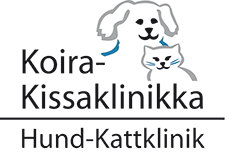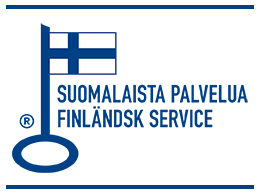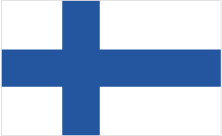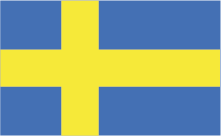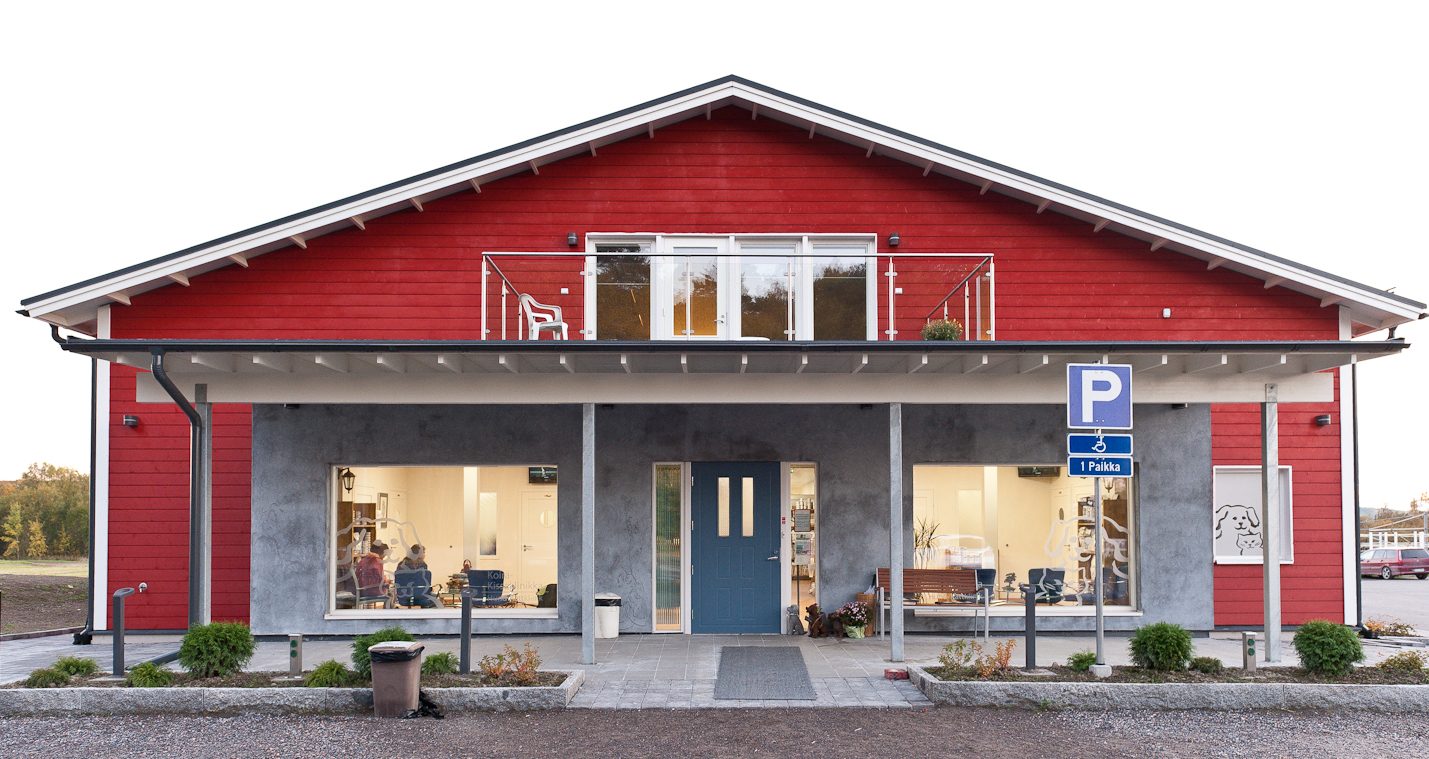Ultrasound investigation is increasingly used to diagnose chest and stomach illnesses. Ultrasound investigation is most commonly used to examine the uterus, bladder and kidneys. Ultrasound is also very well applicable to diagnose illnesses of the spleen, liver and the intestine. At our clinic we also do PKD (polycystic kidney disease) investigations on cats. Heart ultrasound investigations are a very important procedure to help diagnose heart disease in cats and dogs. Ultrasound is often used to determine if a dog is pregnant.

Ultrasound examinations can further clarify findings which came to light in an X-ray. Accumulation of fluid in the thoracic and abdominal cavities can be quickly detected with an ultrasound examination. Ultrasound is used as an aid when using FNA (fine needle aspiration) to get samples of mutated tissue or of fluids accumulated in the thoracic and abdominal cavities. The ultrasound machine is a very important support device when removing fluid from the pericardium.
The ultrasound examination is painless and safe. Normally the animal is not sedated for this examination. Sometimes hair is removed from the area to be examined and it is wetted to improve contact.
For the bladder examination the animal has to be kept from urinating for at least 6 hours. Other special measures are usually not necessary. For the abdominal examination it would be good if the animal does not eat, so that the contents of the abdominal cavity and the intestine do not bother the examination. You will receive specific instructions from the clinic before coming to the examination.
Internal disease investigations are carried out for patients who have symptoms of illness in the respiratory, digestive, or urinary tract, or in the endocrine system. The examination begins with a careful evaluation of the symptoms and preliminary knowledge. A thorough general examination of the patient is carried out: temperature is taken, the mucosa is checked, the lymph nodes and stomach are handled, and heart and lungs listened to. On the basis of the symptoms and findings the need for further investigation is defined.
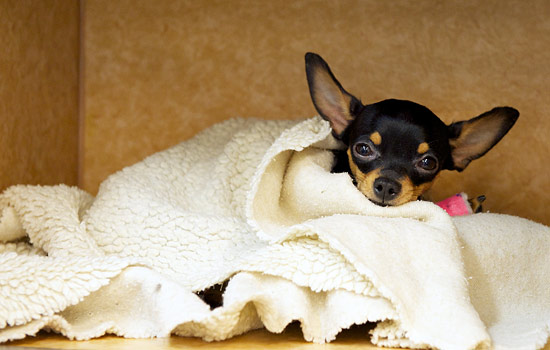
Blood tests are almost always done. The laboratory does a basic blood count and measures the internal organ values of serum samples. Patients in bad shape get their results after a short wait, in other cases the owner is informed of the results by telephone the next working day. Antibody and hormone assays are forwarded to a reference laboratory. Urine sample examination is also a part of the basic examination, even for issues other than urinary problems.
X-rays can usually be taken without sedation if the owner holds the pet. Digestive and urine tract investigation can also be done using angiography. For this prior preparation is necessary, including fasting and other instructions.
For ultrasound examination it is often necessary to shave some hair from the region of the stomach: the investigation is painless and is done without sedation. Dog and cat patients usually accept the investigation easily, in spite of the fact that they have to lie on their backs on a mattress. Sometimes an accurate diagnosis requires collecting samples by either an endoscopy or laparotomy.
Special diet foods have been developed for the care of different illnesses, and they are sold only due to veterinarians orders at animal clinics. On the Finnish market, at the moment, you can find special foods from various manufacturers for the care of the following illnesses:
Overweight
The fat and energy content of these foods has been diminished and fibre has been added, the objective being to reduce calorie intake and with the indigestible fibre increase the mass of the food in order to moderate sensations of hunger. Once the ideal weight has been attained, it is possible to continue with food that has more calories than the weight loss diet; however the calorie content has to be low enough so as to prevent putting on weight, especially in castrated or sterilized animals.
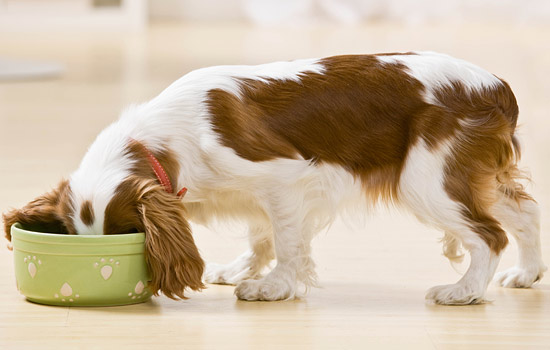
Diabetes
The objective of these foods is to prevent the fluctuation of blood sugar levels using fibres or carbohydrates, possibly resulting in a reduction of insulin dosage.
High sensitivity to foodstuffs
The objective of these foods is to prevent allergic reactions such as an itching rash, chronic outer-ear inflammation and chronic gastroenteritis. These foods generally have only one carbohydrate source and only one animal protein source, which has been hydrolysed, which means that the molecular weight of the proteins have been chopped so small that the immunological system cannot identify them.
Digestive tract illnesses
For example in digestive tract surgery, intestinal inflammation, illnesses of the pancreas, abdominal cavity swelling or rotation are states in which it is important to have extremely easily digestible foods, in which fat content is limited. Soluble fibres have been added to help the intestinal flora normalize.
Hypo function of the kidneys
Different diets are used depending on how far the kidney illness has progressed. The objective among others is to diminish the accumulation of nitrogenous waste substances in the body, and also help control blood pressure. Proteins, phosphorus and natrium have been reduced, and non-protein source calories and B-group vitamins have been added.
Liver malfunctioning
The objective among others is to reduce the load on the liver, slow down the progress of the damage and to bolster its functioning. Reducing the amount of copper will therefore avoid too much copper accumulating into liver cells, and the necessary amount of branched chain amino acids avoid, for example, ammoniac concentration.
Lower urinary tract illnesses
For the care of struvite kidney stones in dogs and cats there is a diet available, both for dissolving the stones and for prevention. Getting less magnesium and phosphorus will reduce the concentration of these minerals in the urine, and getting less protein and more natrium will increase the quantity of urine thereby reducing the concentration of struvites. Acid urine produced by food helps dissolving /prevention. The formation of calcium oxalate stones may be prevented by a diet, but not dissolved. For dogs there are diets to prevent silicate stones, and also to dissolve and prevent urate and cystine stones.
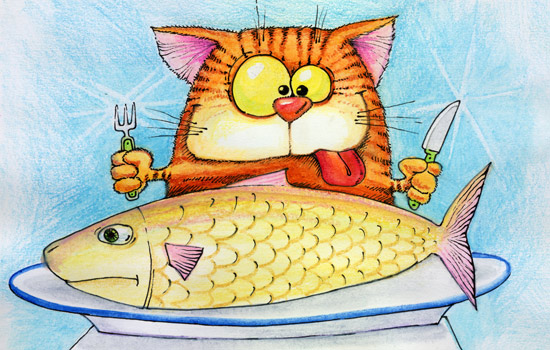
Heart failure
The objective is to regulate the ingestion of natrium, chloride, potassium and magnesium to an optimal level, to help control the clinical symptoms deriving from fluid accumulation, and diminish, for example the side effects of liquid removal medication and support heart activity with added L-carnitine and taurine.
Cancer (dog)
The objective is to remedy metabolic disturbances in dogs with cancer, and improve the functioning of the immune system with arginine supplements. The energy source of the tumour is inhibited by reducing carbohydrates which the tumours feed on, and adding fat content to the food, of which the tumour cells are only able to use a limited amount.
Preventing tartar
The structure of a piece of food influences tartar prevention, when it is larger than normal and the fibres in it are organized so that they clean the surface of the teeth. The food also contains only limited amounts of protein and calcium, which are the building materials of plaque and tartar. The size of a piece of food is different for a cat, a small and a big dog.
Brain aging (dog)
The objective is to help prevent aging symptoms of the brain such as sleep pattern disturbances, weakening domestic cleanliness, confusion. The diet contains a lot of different anti-oxidants, which help diminish cell damage, and also, among other things, alfa-lipoic acid to help improve energy/matter exchange.
Mobility maintenance (dog)
This is meant for adult dogs to improve mobility of joints, for example of osteoarthritis patients. Contains green lipped mussel extract.
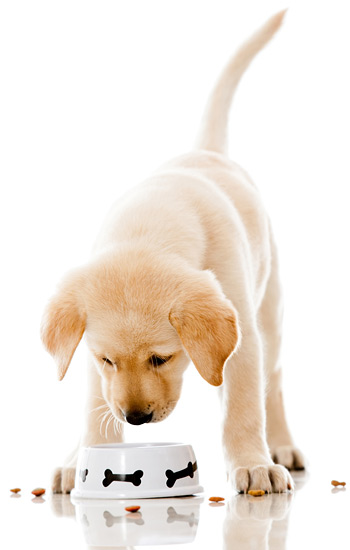
Convalescence
Diet is meant for support care, for example of an animal recovering from surgery, which has a lack of appetite, and animals with a low fitness level and require food containing a lot of energy. Great fat and protein content further muscle tissue preservation and the efficient activity of the immune system. Vitamins and amino acids have also been added.
It is also possible to find substitutes for mothers’ milk for kittens and dog puppies, as well as a preparation meant for restoring fluid balance in cases of slight dehydration, for instance in sudden vomiting/diarrhoea attacks.
When having and caring for a pet there sometimes is a need to face a situation where a decision has to be made about letting the pet go. The decision about putting the pet to sleep is made by the owner and the veterinarian together. The final decision belongs to the owner, unless it is clearly a case of animal protection. A decision about euthanasia will have to be taken when the pet is seriously ill and there is scant hope of recovery, or if the nature of the illness is such that it causes the animal great suffering. Sometimes the reason for the euthanasia decision is that the pet is exceedingly aggressive, which causes dangerous situations at home and in outdoor activities. Other difficulties in keeping the pet may also contribute to a euthanasia decision (allergy, life changes, etc.). In cases of difficulty in keeping the pet it is however hoped that the owner will first try to do what is possible to find the pet a new home.
Euthanasia is performed at the clinic by appointment, and we try to take care of emergencies considering the pets additional patients. The animal is taken to a tranquil room with the owner, and a given a sedative shot in the muscle. The sedative will make the animal fall into a deep sleep in about 15-20 minutes. The actual termination substance, which will stop the heart and the respiratory centre, will be given intravenously while the animal is in a deep sleep. Breathing will usually stop during administration and the heart usually a bit later (after a few minutes). Verifying that the heart has stopped is always done by using a stethoscope. The owner may, if so desires, leave the procedure when the animal has slept because of the sedation, or may stay until the end and spend a quiet moment with the pet after it has passed away.
The clinic can arrange for the pet to be cremated, if it is not possible for the owner to bury the pet. The owner may choose between a group cremation where the ashes remain at the crematory, and an urn cremation, where the owner receives the pets’ ashes in an urn. Koira-Kissaklinikka uses crematory, which is located in Mynämäki.
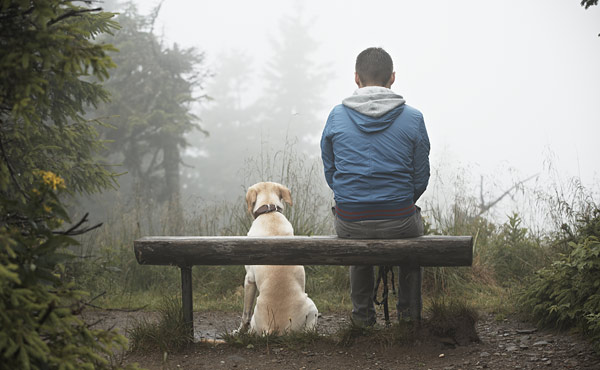
Internal visual examination (endoscopy)
Internal visual examinations of cats and dogs are always carried out with the patient under narcosis. This is why the preparation for it has to be as for any narcosis, namely with a 12-hour fast. Other instructions may be given to specific patients, for instance concerning ingestion of liquids or evacuation of excretion.
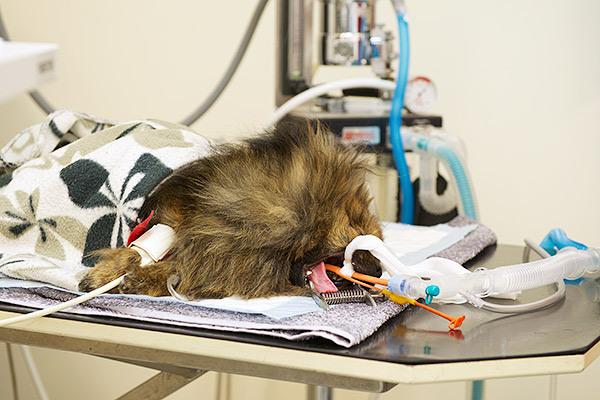
Before the examination, the necessary basic tests will be carried out: blood tests and X-rays will always be taken. Patients with stomach symptoms will usually respond to a diet, and it is worth trying changes before the internal examination. For some patients, a thorough basic investigation will result in an adequate diagnosis without the need for an internal examination. Internal visual examinations will be done on chronic patients, or ones who do not respond to care or a diet, and for instance patients for whom it is necessary to extract samples in order to determine the precise care. Additionally, this examination can be used to look for foreign objects.
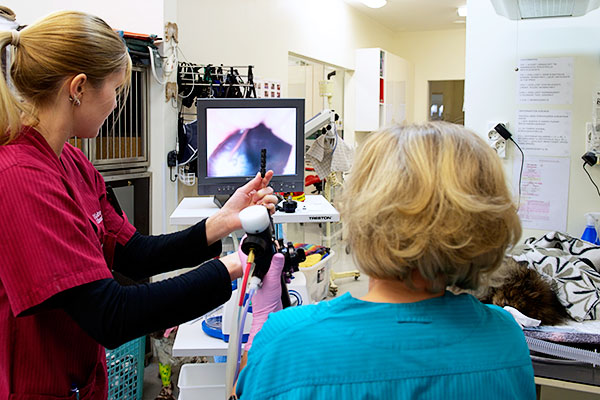
An endoscopy of the nose – or of nasal and para-nasal sinuses – is performed on patients who have a chronic runny nose or nose bleeding. With the internal examination we look for foreign objects, tumours or changes in the mucous membrane which are typical of inflammations or fungal infections and of which samples are taken. With a bronchoscopy it is possible to clarify the causes of chronic coughing: biopsy and brush samples of the mucosa are taken for cytological and bacteriological testing. A gastroscopy will clarify illnesses of the oesophagus and the stomach, such as foreign objects, inflammation reactions, ulcers or tumours. Imaging with a contrast agent will better clarify the workings of the stomach-digestive tract (cf. contrast medium imaging). A typical patient is a chronically vomiting dog or cat which has not responded to medication and the diet normally recommended for the symptoms.
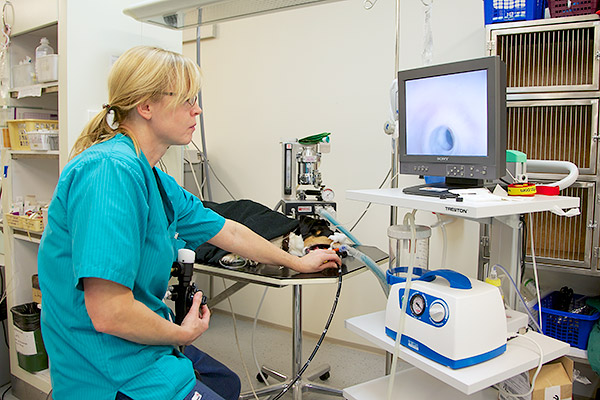
A colonoscopy may be performed on patients suffering from chronic colic and blood in stool. The patient prepares for the examination by emptying the bowel and following fasting instructions.
For vague stomach pain or in clearly intestinal/abdominal cavity problems a visual examination is usually worthless, and we often recommend laparotomy (i.e. surgery that opens the abdomen) to clarify the reason for the symptoms. On such an occasion it will also be possible to verify the state of the liver, pancreas and the spleen, and also take samples from them, or in case of necessity perform there and then a surgical procedure to improve the functionality of the organ.
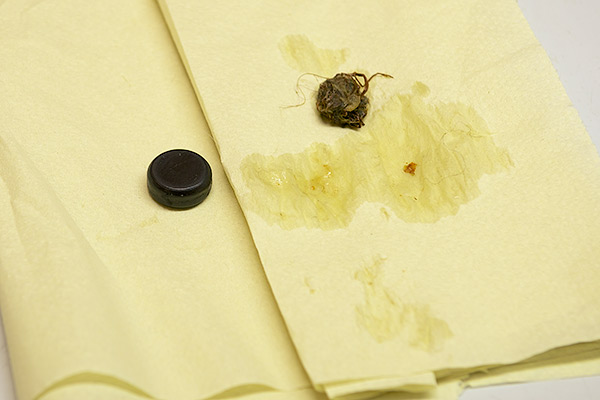
At our clinic we investigate eye injuries and diseases of dogs, cats and exotic animals. Official eye inspections are performed on breeding animals. Eye disease often requires immediate care, and we do not like to give an opinion over the telephone.
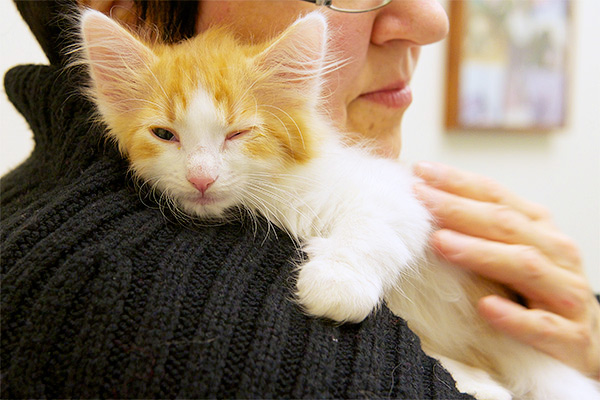
Eye patient examinations take place in normal light as well as in a dark eye investigation room. Routine investigations include examination of the eyelids and the front part of the eye (cornea, haw (nictitating membrane), anterior chamber and the iris) with a slit lamp, that is, a bio microscope. Eye pressure measurement is done with a so-called Tono-Pen meter. The examination of the back of the eye or retina and the optic nerve is done with an indirect ophthalmoscope.

During the investigation it is important that the patient is as positive as possible about the examination, and that its possible to hold its head firmly, if not there will be difficulties in getting an accurate picture of the injuries or damage.
In official eye examinations different breeds have different recommendations as to when to undergo the examination, and as to when to regularly renew the exam. It is important to check out the recommendations of the specific breeding association.
When booking an appointment for an eye patient, it is important to say at that time whether it is about a long-standing problem or maybe only a short control visit. It is recommended to bring along to the appointment old examination results, medication information and statements.
After the care and examinations which require different surgical procedures, sedation or narcosis, the patient will remain in the post-op room of the clinic for as long as necessary.
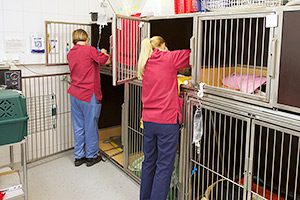
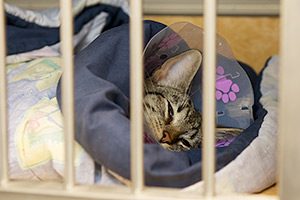
In this care department we have nine places, of different sizes, for patients. We also have a so-called bunk bed for cats, where there is place for several cats or small dogs. If the patients’ illness is such that it requires medication staff to be continuously ready to act, the patient will be kept under observation and care in the recovery room during the whole day. Like this our recovery room is used as a “day hospital”. As a general rule the patient sleeps at home, under the supervision of its owner. It is also important for the rehabilitation of the patient that its psyche remains as stable as possible, and often sleeping at home seems to uphold and strengthen its will and desire to get well as soon as possible!
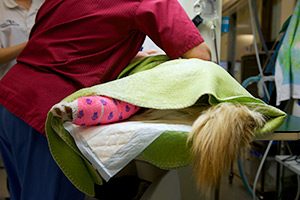
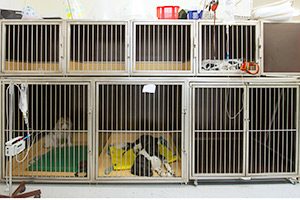
At our clinic we perform over 700 small animal surgeries annually. Surgical interventions take place daily. Various wounds and damage, accidents, Caesarean sections and on the other hand castrations and hysterectomies, and benign or malignant tumours are the most common causes which lead to surgical intervention. Different types of loose/free bodies resulting from growth problems and ligament injuries are operated on every week..
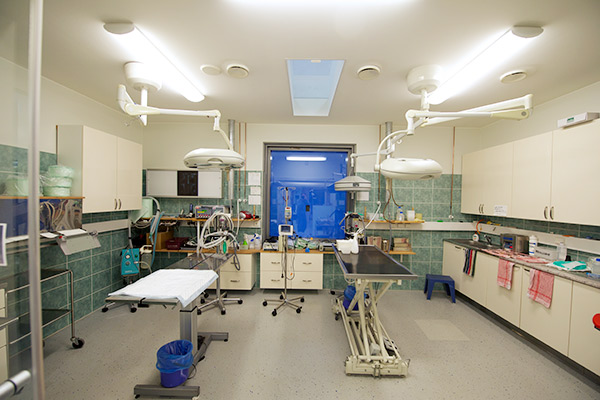
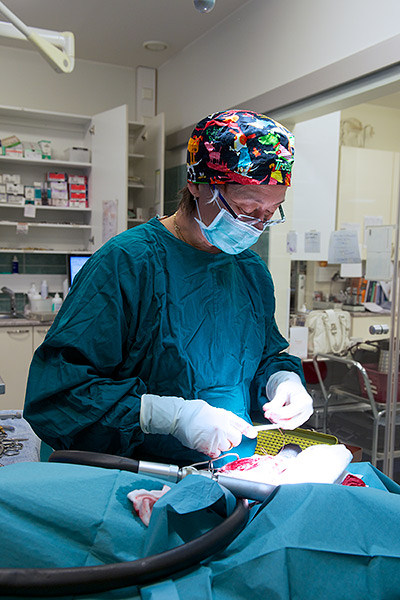
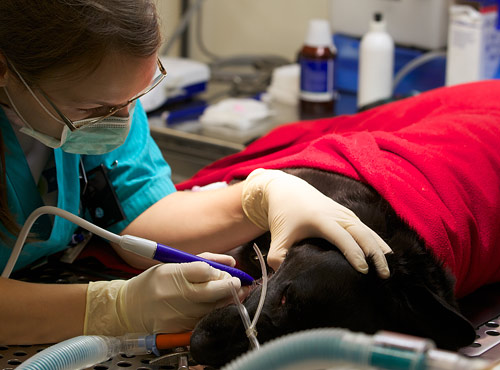
Fracture patients always come in during the autumn, the darkest time of the year, as a result of accidents. In the summer when family activities increase, dogs and cats are exposed to situations such as being underfoot, getting caught between the boat and the quay, etc. More demanding and rare are for instance hip surgeries for dogs. So-called TPO (triple pelvic osteotomy) surgeries have been done at our clinic since 1992.
Before administering premedication, the general health and physical condition of the patient are evaluated, and the heart and lung sounds are listened to and the weight checked. All surgeries are carried out whilst the patient is under narcosis with a mixture of oxygen and isoflurane. The surgery is preceded by putting a cannula in a vein, administering painkillers and antibiotics intravenously, and fluid therapy also begins. Fluid therapy is continued in the post-op room until the pet can go home. Every surgery patient receives written instructions for continuing care at home, and usually a control visit to the clinic is already agreed upon – not only to remove stitches, but also to ascertain and monitor the rehabilitation of the convalescent. When setting the date and time of the operation instructions are given concerning pre-op fasting and other matters to be attended to prior to arriving for the surgery. Usually the patients are kept on a 12-hour fast (with the exception of small puppies and exotic pets), though water can be available. A bath on the day preceding the surgery will contribute to the disinfection of the skin done at the beginning of the surgery, and sometimes we ask for a trim before the operation if the patient has a very long coat.
Washing the surgery site
During the operation itself, the depth of the narcosis and its general well-being are monitored very closely, exactly in the same way as in a human operating room: the patients pulse, breathing and blood oxygen level are constantly monitored using an oxygen saturation measuring device (see sedating and anesthetizing the animal patient).
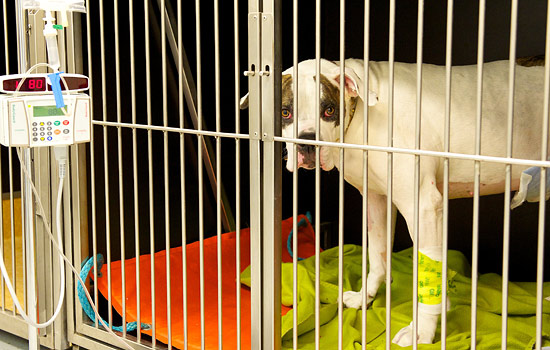
After the operation the patient is moved to the post-op room, where care staff can supervise the coming out of narcosis before leaving for home. The operation day is usually spent on recovering from narcosis, and your pet cannot eat or drink until it is completely awake – often only the following morning. The surgery patient should not be left alone at home on the surgery day/evening – give it a calm, safe, familiar and warm place beside yourself to awaken from the narcosis, and through a normal night’s sleep into the next day. The surgical cut should be protected from your pet’s own attempts at care, such as licking and biting the stitches, using a so-called “Elizabethan collar.” This collar will prevent it from messing around with the cut, but your pet is able to drink, eat, smell and after a little getting used to it and also move around normally. Collars of different sizes are for sale at the clinic.
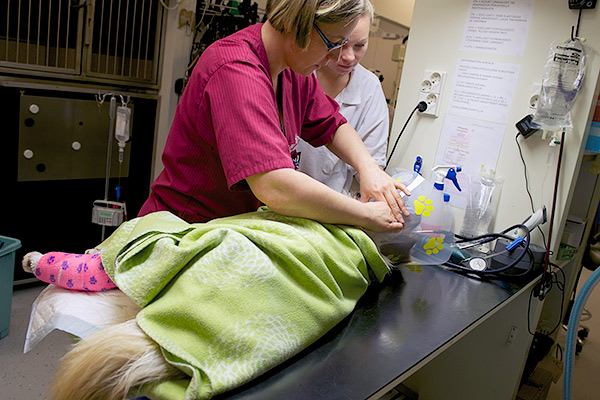
Collars are also sold at pet shops. The other care supplies, such as bandaging, which you may need, can be bought at the clinic, as well as the medication the patient will need to take at home.
Do we also operate on lions?
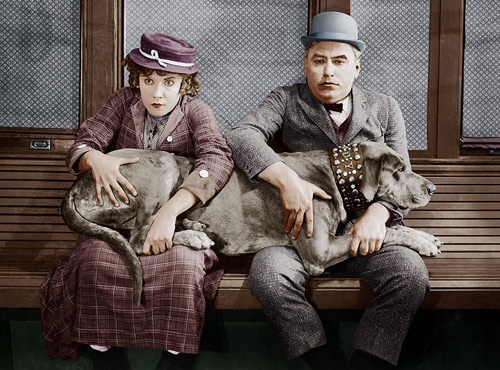
Some of the investigations, tests, sampling, or care procedures may require sedation. Other animal patients may be so afraid or aggressive that sedation becomes a necessity to make the patient feel relief and so that the procedure is successful.
Nowadays there are many different types of sedatives. Often the sedative used can be reversed after the care /investigation and your pet can walk out of the clinic on its own feet. If the sedative is not reversed you must let the patient wake up peacefully at home or at the clinic. The recovery period is according to the individual, but in principle your pet is wholly recovered after many hours, perhaps only the next morning.
Do not offer your pet any water or food until it is its own self again and do not try to force it to go out. A pet coming out of sedation is prone to some mishaps (urinate in its bed, defecate or vomit). Therefore at home it is worthwhile to choose an easy to clean bed for the awakening. Watch that your pet does not hurt itself trying to get up or tripping after you into the kitchen, not to mention stairs. In other words, the best place is at floor level with a warm blanket thrown on top, to keep body temperature adequate until the patient has woken up completely. Don’t leave it alone, don’t laugh if it looks like a drunkard, but also don’t express pity for it!
Give your pet that is waking from sedation a calm, safe and warm evening at home with you!
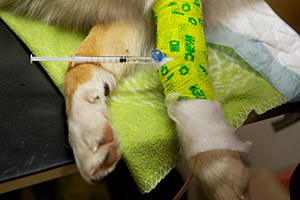
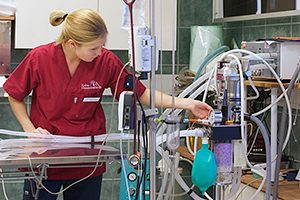
You will be informed when booking the appointment whether you’re pet will be sedated and you will receive instructions about a possible food and/or water fast which must be done before going to the clinic. Follow the instructions received closely and also explain the rules of the game to other family members – one hungry evening is not allowed, even if you’re pet comes begging for food.
Narcosis, putting the patient to sleep, is necessary in different surgical procedures. For surgical, having fasted for 12 hours, the patient first receives so-called pre-medication, which will relax and calm the patient. After this a cannula is put in a vein, through which are administered the necessary medication, pain killers, antibiotics and physiological fluid therapy. The patient is intubated (a tube is inserted into the trachea) and it will breathe a narcotic gas/oxygen mixture throughout the operation. During the surgery itself the wellbeing, body functions and the depth of the narcosis is monitored all the time (pulse, oxygen measurement, intravenous drip) – just like in human surgeries.
It is not possible to reverse narcosis in the same manner as sedation. The patient will awaken from narcosis according to its individual timetable and your pet will only be able to go home when we at the clinic have ascertained that the post-op awakening has occurred without any problems.
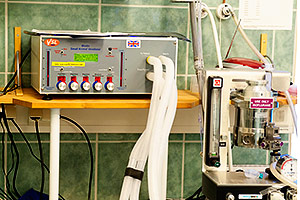
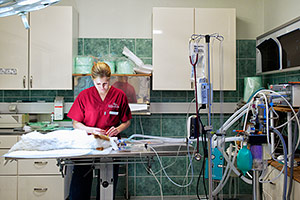
The body temperature of an animal patient upon waking from narcosis is lower than normal and it may have shiver due to the cold. In winter take along in the car a warm travelling blanket for the patient and warm up the car first. Carry the patient into your home to a warm, dry place where there are no drafts. Put it on a rug or its bed and check that the breathing channels are open and that its tongue is hanging out of the mouth. When coming out of narcosis the animal patient does not control its movements immediately, nor do the muscles which control closing the bladder and the intestine do not function normally at once. Therefore some unintentional accidents may happen inside the house.
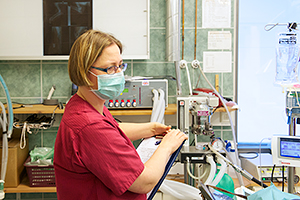
Do not leave your pet alone, but give it the opportunity to wake up peacefully in a calm, familiar environment and under your surveillance. Don’t be frightened if your dog coughs upon waking up. The narcotic gases used during surgery are administered through the intubation tube into the dogs’ respiratory tract, and because of this its throat might momentarily be a little sore and provoke coughing.
Every surgery patient receives written follow-up care instructions from the clinic, which contain all the necessary information on the patient for drinking, eating, being moved, what medication to take and when, and also on the follow-up inspection.

New-born kittens and puppies receive from their mothers and from mothers’ milk protection against many infectious diseases. However, during the first weeks of life this protection weakens and the pups have to receive their own protective vaccines in order to avoid serious virus-based infectious diseases sometimes rampant in Finland. At the moment of vaccination the pup has to be healthy and dewormed, if in connection with evicting parasites you suspect that your puppy may have had a lot of worms, repeat the deworming according to the instructions of the anthelmintic (worm medicine) you are using and only then book time for the vaccinations.
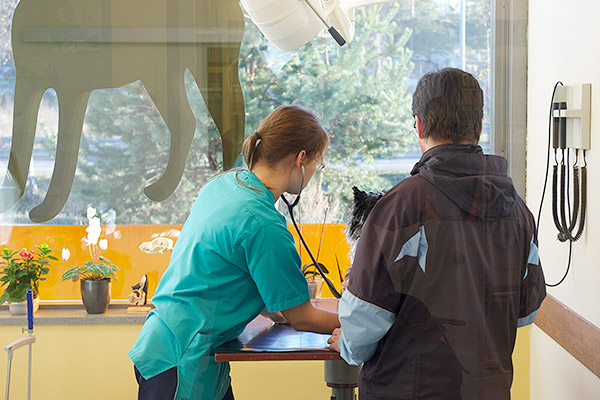
It is recommended to wait for 1-2 weeks between deworming and vaccination. In this way the effectiveness of the vaccines is greater. Worms of dogs and cats do not as a rule infect humans, and you cannot prevent a dog or cat which is going around outside from being infected. Parasites infect easily through eggs in stool. If your dog or cat has worms, it does not therefore mean that you have cared for your pet badly. You should guarantee your pets’ well-being by doing deworming regularly, for instance in the spring and autumn. As needed, deworming may have to be done more often. Worm medicine can be bought in pharmacies or veterinary clinics without a prescription. You can also bring a sample of your dogs’ or cats stool to be examined for worms at the clinic.
Dogs
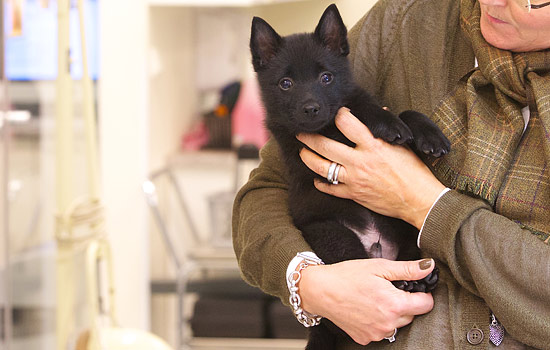
Puppies are vaccinated against canine distemper, infectious hepatitis, parvovirus, and rabies. There is also an influenza vaccine specifically for dogs. The first vaccination (usually the so-called combined vaccine against the three diseases mentioned first) is given when the pup is about 12 weeks old, and requires that a so-called booster vaccine be given about 4 weeks later. According to current recommendations the rabies vaccine is given separately 2-4 weeks after the booster vaccine. This recommendation is an EELA (Food and Veterinary Research Institution) guideline which was adopted because of vaccine reactions. If the owner so wishes, the booster and the rabies vaccines may be given at the same time.
After these vaccines have been given, it is assumed that their protection will last about 1 year. For dogs over one year old the booster vaccine is valid for three years, the exception being the influenza vaccine, which must be renewed every year. In dogs used in Earth Dog Trials and Underground Hunting the rabies vaccine is valid for only one year.
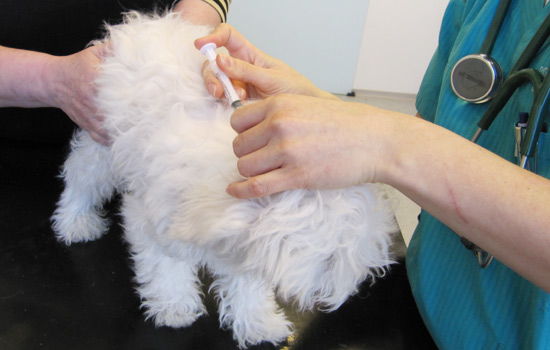
In general vaccines do not provoke any side effects. The dog may feel a little wilted, and in the evening of the vaccination day it may run a temperature. This goes away by itself, and the next day the dog will be its usual brisk self. The vaccines are administered under the skin on the nape of the neck, and may sometimes result in a small lump of liquid, which does not require that anything be done about it, and will disappear slowly by itself in a few weeks.
Because of increased reactions to vaccines we recommend that the patient stays in the immediate neighbourhood of the clinic for some 15 minutes after administration. The strongest reactions usually appear within 15 minutes after the vaccine has been given, and then help is at hand.
Attention! If you travel with your pet to Sweden, continental Europe or even further away, remember that vaccination rules and necessary documents at your destination may be different from the ones in Finland!
